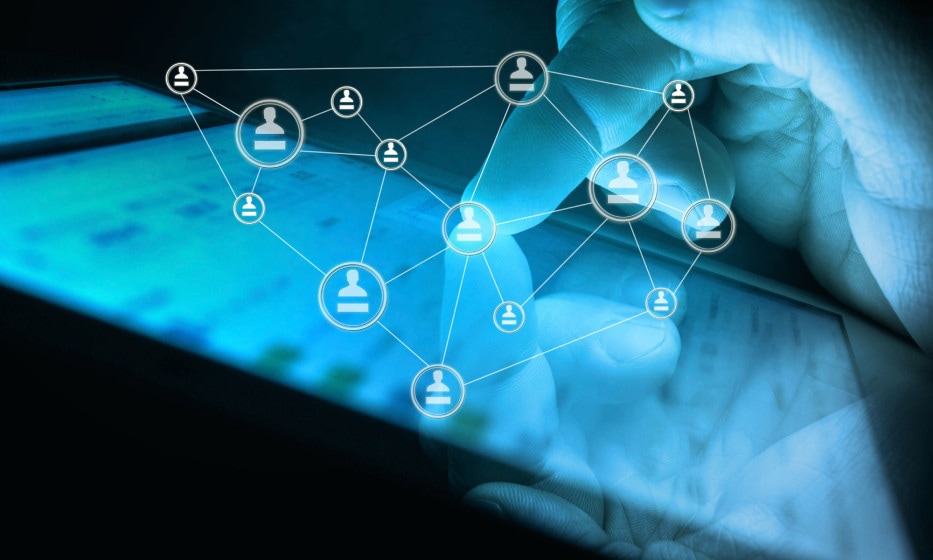In the near future, the convergence of cloud computing, wearable mobile devices and ubiquitous interlinked sensors promises a paradigm shift as great as any that has taken place previously. In this new environment, where an individual’s very senses will be augmented, brands will have a previously unimagined ability to engage people. This ability will be counterbalanced by an unprecedented degree of control individuals will gain to prevent information overload and to protect their privacy.
To succeed, then, brand intimacy — the science of how people form close, personal and essential relationships with brands — will need to become a critical consideration for businesses if they are to be a welcome participant in an individual’s perceptual net…or personal space.
Many consumers have already experienced sensors via the haptic feedback provided by their smartphone touch screens or by their “force feedback” joysticks or video game steering wheels.1 Today, although the Internet of Things (IoT) is rapidly growing, linking networks of sensors to bridge the digital and analog worlds, it is still little known by consumers, even as they are experiencing the IoT in the growing market for network-connected fitness bracelets and thermostats, not to mention the about-to-explode market for smart watches. Out of public sight, however, are a slew of burgeoning sensor-driven technologies and applications — from self-replenishing supply chains and automated city management systems to self-driving cars — that have analysts and many companies excited about the business opportunities.

More recently, academics at the MIT Media Lab have been looking at a different side of the IoT, exploring how the ways we see, hear, think and live will change when individuals can connect to it directly. They argue that, “the modern world is filled with network-connected electronic sensors, but most of the data they produce are invisible to us, ‘siloed’ for use by specific applications. If we eliminate those silos and enable sensor data to be used by any network-connected device, the era of ubiquitous computing will truly arrive.”2 Specific to this topic, the MIT Media Lab is investigating questions such as: Where do human senses begin and end when a person is linked to a sensor network that extends virtually everywhere and grafts information onto human perception?3 And, what will “presence” mean when people can funnel their perceptions freely across time, space and scale?4 They believe the new world of ubiquitous computing will be created by “context aggregators,” tech companies that assemble sensor data into a new generation of applications.5
The forthcoming world of ubiquitous computing, context aggregation and augmented perception presents both tremendous opportunities and challenges for marketers. At the dawn of the internet age, psychologist Mihaly Csikszentmihalyi wrote about the potential of the internet as a medium for staging experience. He focused on the possibility of creating web experiences that would elicit “a state of intense emotional involvement and timelessness that comes from immersive and challenging activities.”6
The internet has generally fallen short of delivering truly immersive experiences, but it seems that with ubiquitous computing, the promise of truly immersive experience may finally be realizable.
This appears to be what several leading technology companies are thinking as well.
With Google Glass, the company introduced its wearable technology, which offers new ways to access information, share content and interact with the environment.7 Google also introduced Universal Analytics, which can integrate offline and online metrics, a capability that would seem more relevant in a sensor-enabled world.
The Apple Watch is more than the company’s first foray into wearable devices. It is Apple’s ” most personal device yet, ” enabling people to connect with each other and with information in new ways and physically touching them for alerts, notifications and health monitoring. In effect, the device extends the wearer’s senses.8

Facebook may be the company that has most tipped its hand with a vision of how sensor-enabled ubiquitous computing can transform the consumer experience. Regarding the company’s recent acquisition of Oculus VR, Mark Zuckerberg posted:
“After games, we’re going to make Oculus a platform for many other experiences. Imagine enjoying a court side seat at a game, studying in a classroom of students and teachers all over the world or consulting with a doctor face-to-face — just by putting on goggles in your home. This is really a new communication platform. By feeling truly present, you can share unbounded spaces and experiences with the people in your life. Imagine sharing not just moments with your friends online, but entire experiences and adventures.”9
What Zuckerberg is talking about and what Google and Apple seem to be alluding to is a shift in what technology is. Technology has typically been thought of as an enabler, a tool to connect us with information, other people and computational power beyond our individual capabilities.
With ubiquitous computing, technology transcends enablement to also become the very environment in which we perceive the world, interact with others, entertain ourselves and get things done.
However, before the emerging environment of internetworked sensors reshape the consumer experience, key issues must be addressed. First among these are concerns about privacy and security. Also problematic is the unfathomable ocean of information that will be at every individual’s fingertips. Connected individuals will need to be able to exert some control to protect their privacy and security, by limiting or preventing access from snoopers and hackers, as well as their sanity, by limiting the flow of information they experience.
From a marketing perspective, the environment of connected and sensor-enhanced consumers creates exciting new possibilities — and challenges. When technology becomes the environment itself, brands will be able to target personalized, context-relevant messages to people based on predictive analytics and individual preferences. In this new world, individuals will be able to exert even more control than at present over which brands they interact with and the degree of interaction they allow. The marketing paradigm that emerges will have new rules, with consumer-brand relationships becoming far more bidirectional than today. When this happens, we believe brand intimacy will become the essential knowledge that brands will need to navigate the new complexities.

Why?
Grounded in psychology and neuroscience, brand intimacy describes the dynamic process of how people form relationships with brands and specifically how those relationships evolve from casual encounters to become progressively intimate. In the ultimate stages of the relationship — sharing, bonding and fusing — brand use or ownership is experienced by an individual as a vital form of self-expression or self-definition. At this point, the individual’s relationship with a brand has gone beyond transactional, beyond trust and beyond loyalty. Our proprietary research has shown that brand-intimate relationships are fairly rare today, although some companies are much better than others at creating them.
Understanding the intricacies and mechanisms of brand intimacy will help businesses better focus their resources to earn a meaningful place in the perceptual/experiential networks individuals maintain, whether manually selected or as part of a package of applications and services orchestrated by a context aggregator.
This understanding will also help businesses avoid or respond to relationship pratfalls that might otherwise lead to consumer indifference and expulsion from an individual’s sensor net. In effect, brand intimacy is the currency of the forthcoming consciousness and experience-expanding world in which consumers can control privacy, security and information flow. Brand intimacy will enable businesses to purposefully engage customers in ways that are emotionally compelling on an individual basis, that create deeper, more personally fulfilling bonds. Ultimately, understanding better how brand relationships work will help businesses get invited in, stay in and build enduring and mutually beneficial relationships with people.
Review the sources cited in this article here.
To learn more about MBLM, click here.
